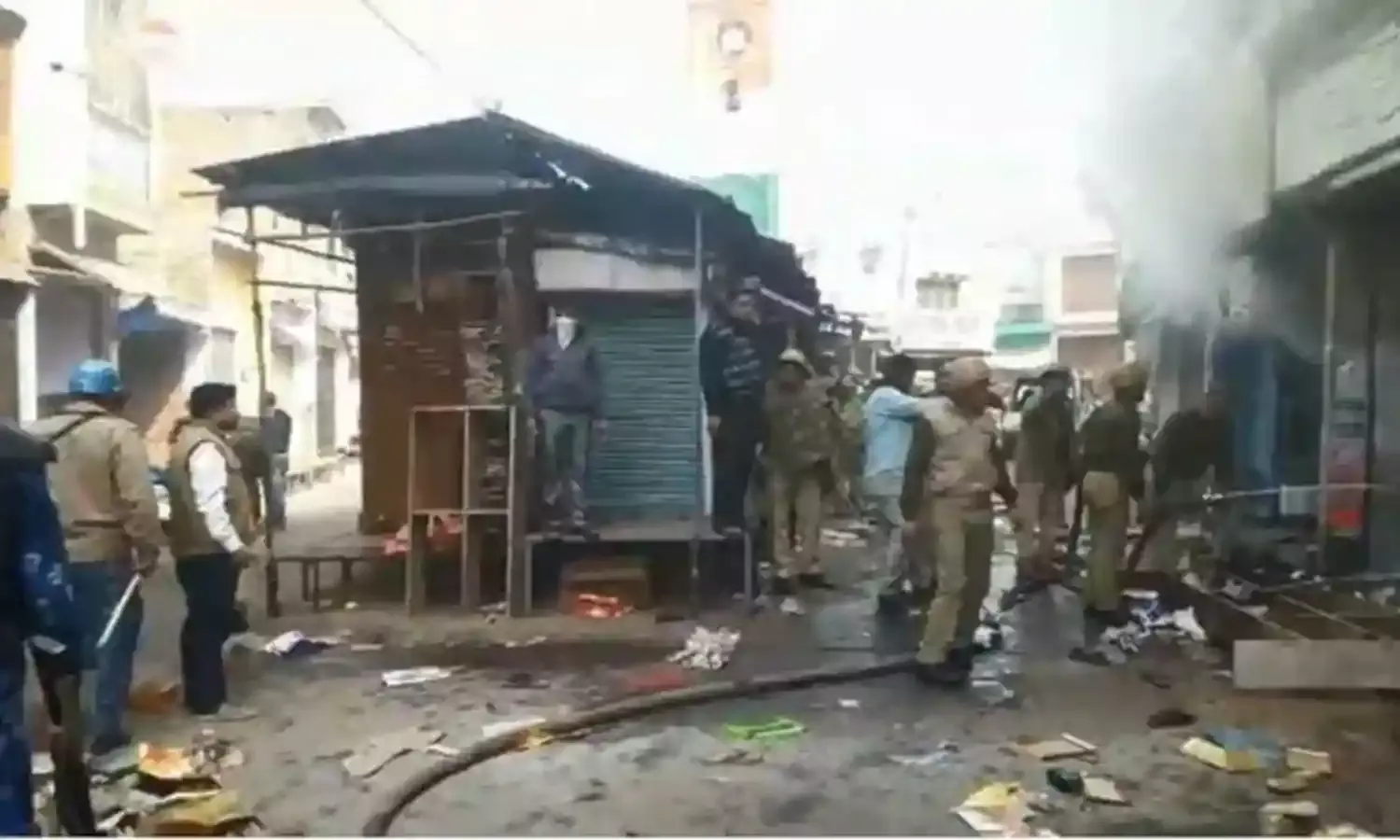Kasganj Violence: Insight into a "New Age Riot"
Hindu-Muslim solidarity also on display

NEW DELHI: In an attempt to commemorate the bloodshed at Kasganj that took place on January 26, 2018, MediaVigil and People’s Vigilance Committee on Human Rights (PVCHR) organized an event at the Press Club of India. “Folk School in the support of survivors of communal violence and torture in Kasganj” received support from United Nations Human Rights Commission and International Rehabilitation Council for Torture Victims.
More than 100 activists, lawyers, professors, students participated in the event which included victims from Kasganj violence who came to narrate their trauma and how the violence has uprooted their family, identity and economic life. The event aimed to stand up for Hindu-Muslim unity, create a narrative of togetherness in the current vulnerable, fragile and easily polarized discourse in India.
“As soon as the violence broke out, the young men who had instigated it went underground. Around 120 were caught by the police, out of which 80 belonged to Hindu community while 30-40 were Muslims. Mostly, the Hindu participants hailed from Sankalp Foundation,” revealed Dr. Lenin Raghuvanshi, Founder and CEO of PVCHR. Along with his team, he visited Kasganj after two days of the violence breaking out in January.
“Interestingly, Kasganj violence sets up a new pattern in communal riots in India. This new era riot was actually instigated months before January 26th. Young men from both Hindu and Muslim Community from Kanganj started an online debate on social media few months back. The Gorakhnath Temple in Kasganj was made a medium through which the Hindu youth tried to connect with senior ABVP political elites in Uttar Pradesh. In fact, this temple, which was once abandoned and found in dilapidated condition, was repaired, the priest was into confidence and finally the custodian of the temple who is Yogi Adityanath was involved. It was a six month process, even before the social media debate started. Thus, the riot was allowed to take place by young men from both sides of the community, who were primarily unemployed,” he said.
Nadeem Khan, a social activist from “United Against Hate” said “It was not a traditional riot. It was an attack by the selected youth in the majority community attacking the minority. But interestingly, both Hindu and Muslim groups showed solidarity to prevent it from further escalating. Kasganj violence reveals how Hindu youth were turned into an aggressive violence mob.”
“There were 23 FIRs launched for one bullet fired, but without any evidence. The homes of the arrested youngsters were ransacked and looted within three days of Kasganj violence. In fact, this violence and how it escalated reveals that it had police/state protection right from the beginning. But unfortunately, we will see more such experiments/riots in the coming months till 2019,” he further added.
Explaining how media further acted as a devil’s advocate and created a hyper-reality regarding the Kasganj violence, Atul Saxena ( a native from Kasganj) revealed, “Media played the riot. Till 26th January 2018, there has been no single act of communal violence in Kasganj ever. For example, there’s Chamundadevi Temple in a Muslim majority area in Kasganj, but in spite of its sensitive location, there has never been any discord reported ever.”
Further delving deeper into the hierarchy of FIRs and the power play involved, Rajiv Yadav from Rihai Manch stated “The caste hierarchy in the FIRs lodged is very evident. In fact, this entire Kasganj violence is an attempt for creation of communal constituency. So, it is very necessary to give legal support to the victims.”
Several Muslim women who were victims of the violence had also participated in the event. Most of them had lost their sons, brothers or fathers in this egregious violence which has now negatively impacted their lives and rendered them helpless. Maham, a young Muslim lady revealed “My 72-year-old father was arrested along with my 18-year-old brother. The emotional trauma led to the passing away of my mother within 15 days. We are three sisters who are continuously suffering, have no hope for justice or economic assistance.” One more lady from her community fainted while explaining the insurmountable pain caused by the violence, right in front of the audience.
Kamal Farooqui from All India Muslim Personal Law Board said “It is not Hindu-Muslim violence but an act for political power. Even what happened in Muzzafarnagar was not an extempore. It’s time we realize that the country is going towards dangerous crossroads.”
Explaining how women are the largest victims in any riot, Sunila Singh, a human rights activist stated “Women and children should never be the victims. It is a dangerous trend how media is unable to analyze the violence correctly.”
In a nutshell, the event was able to create a platform for the victims of the Kasganj violence and narrate the trauma that they were suffering. In a time where they are hardly heard by the lawyers, police or politicians, it is essential to know their narrative and the injustice done to them.



